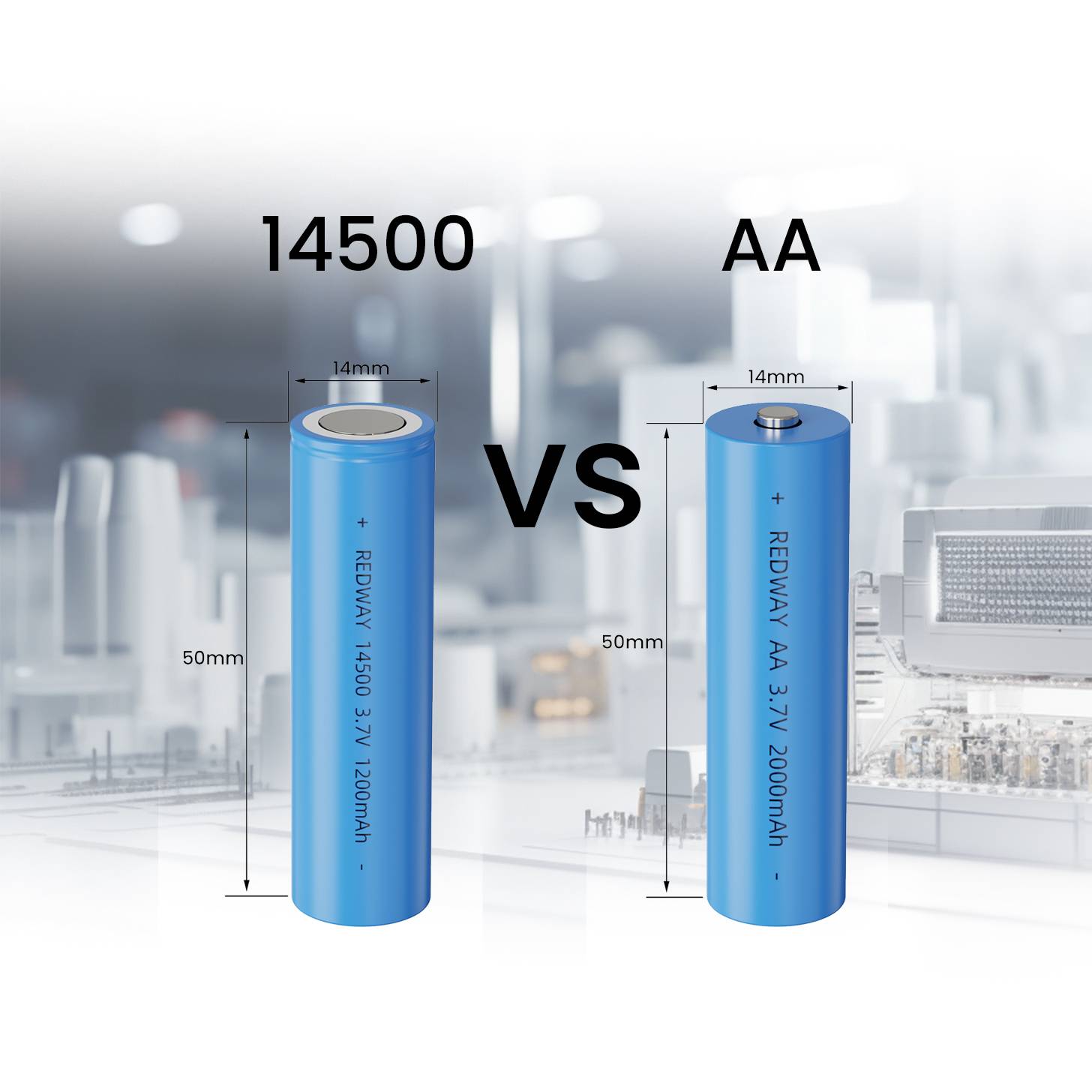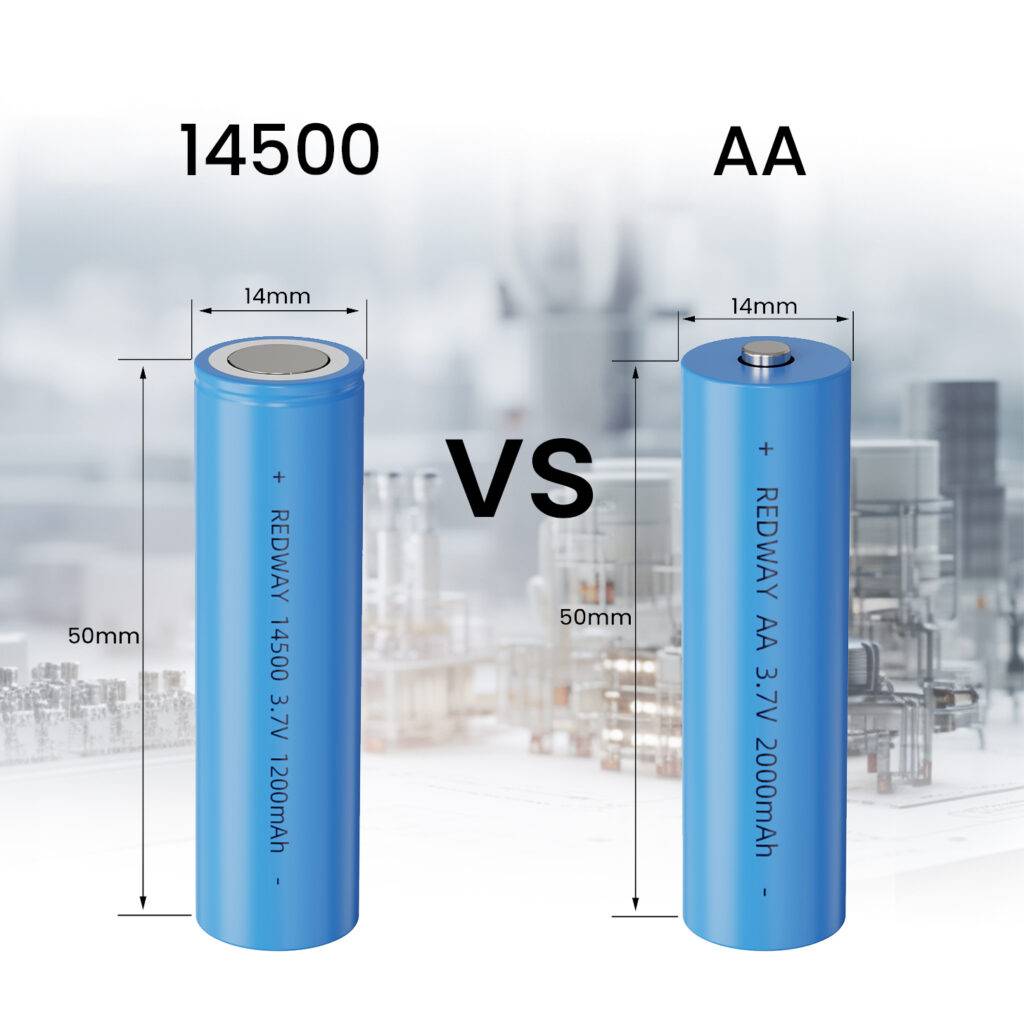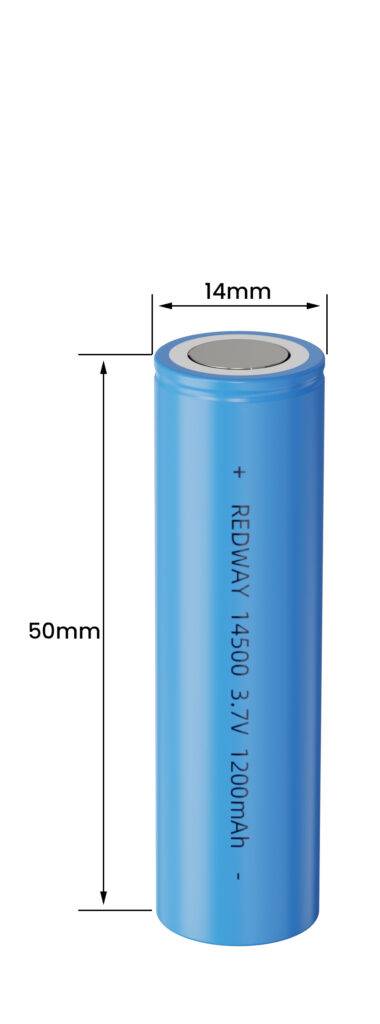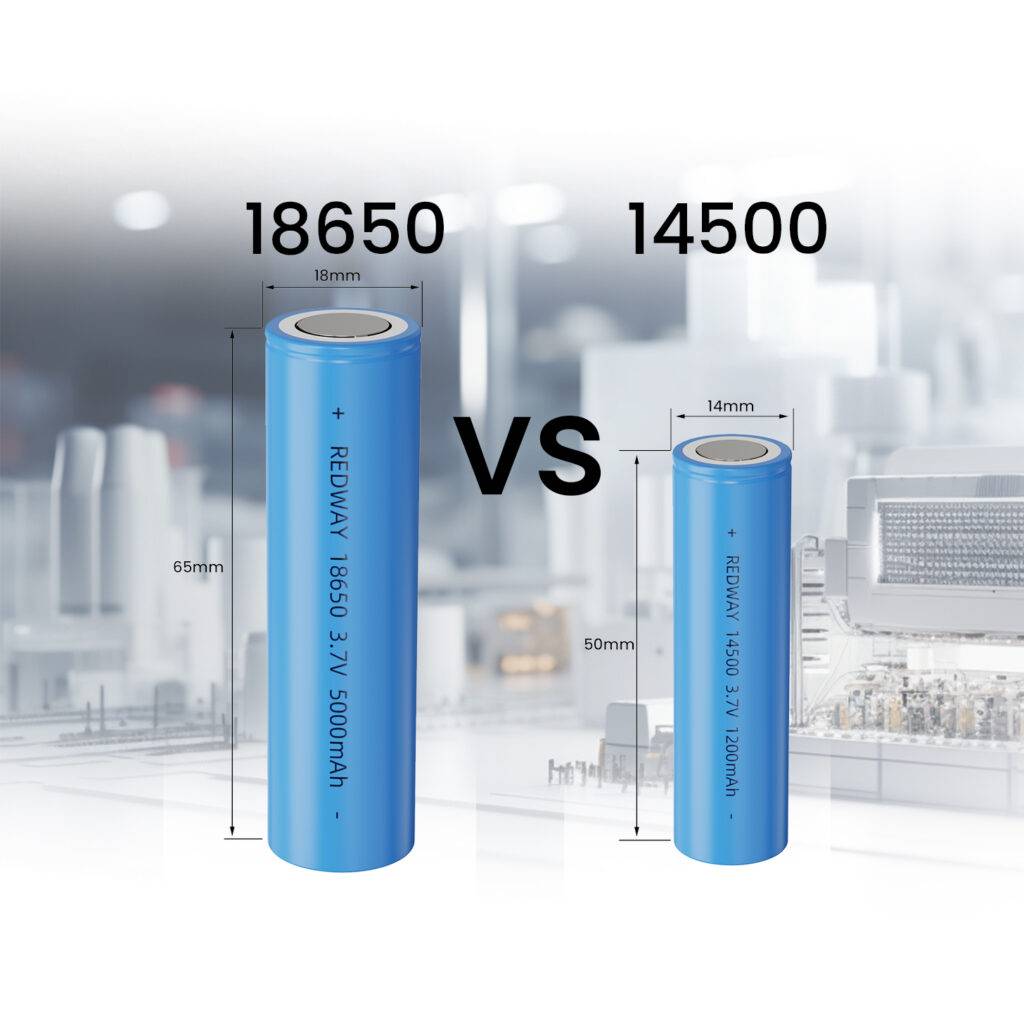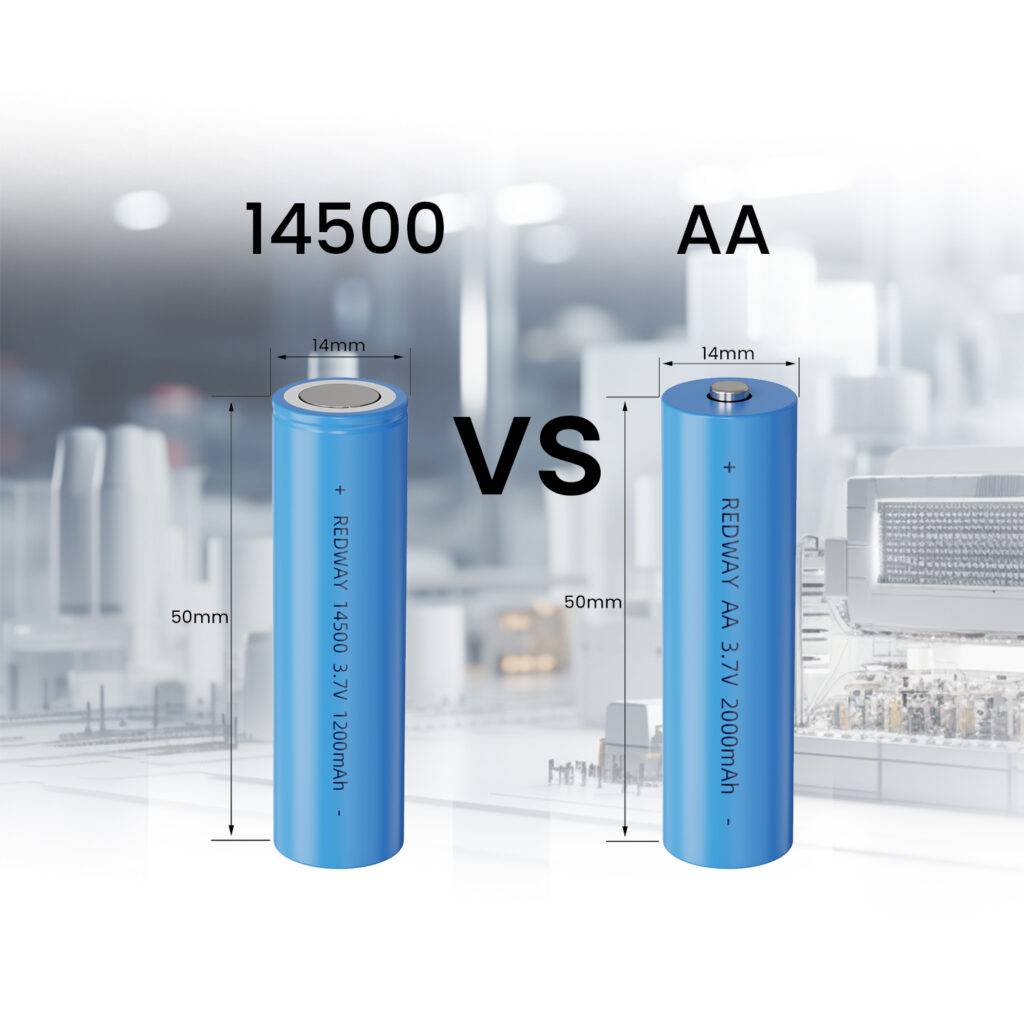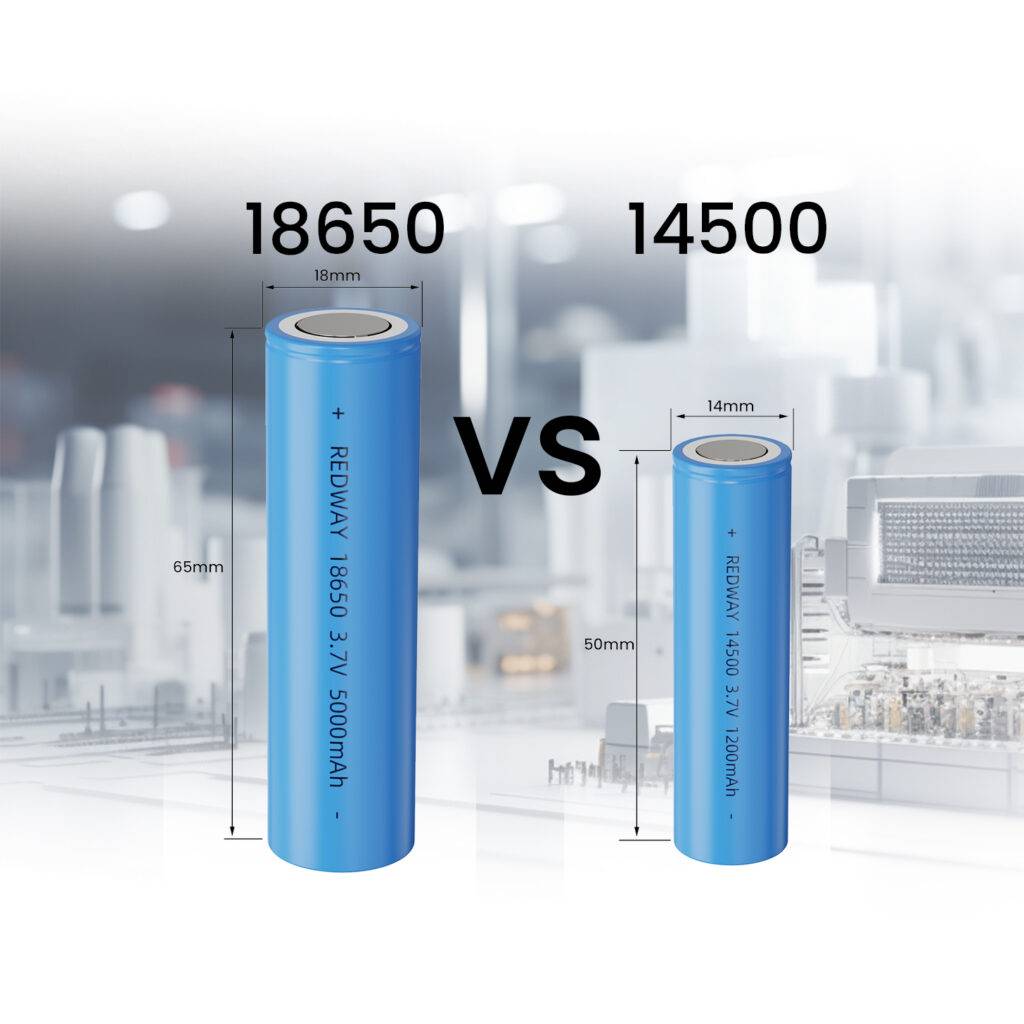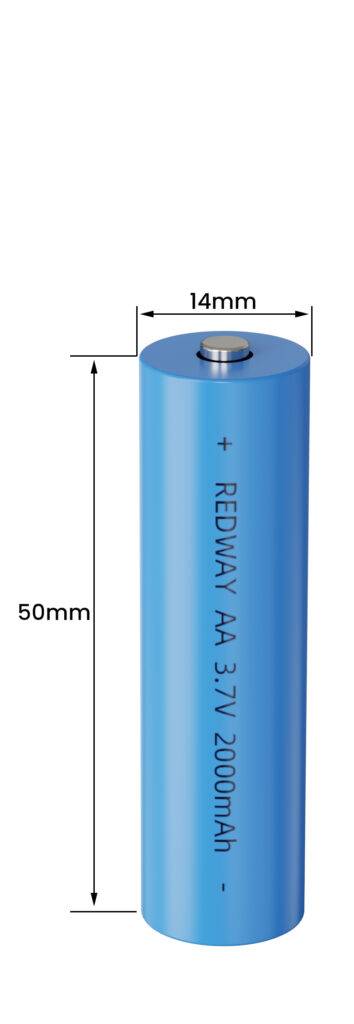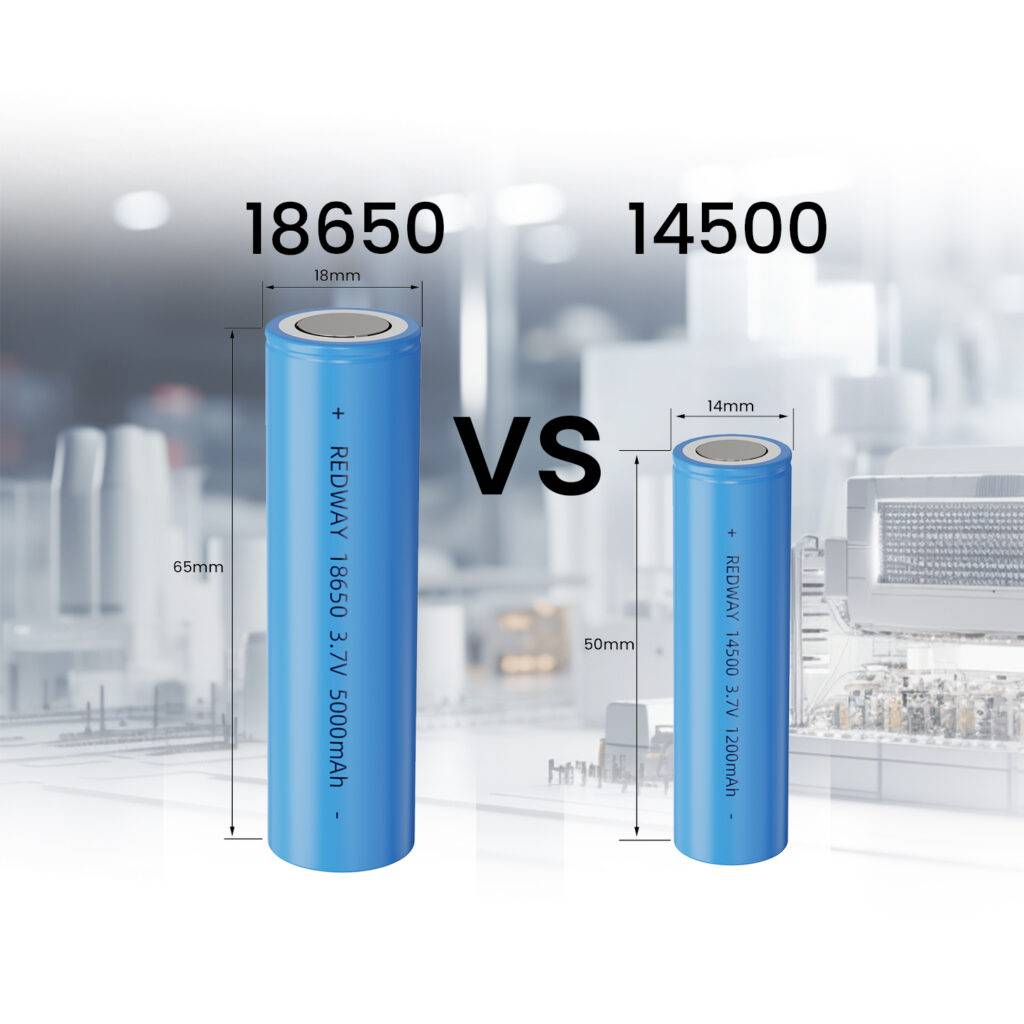In the vast world of batteries, the variety can often be overwhelming. Among these, the 14500 and AA batteries are two commonly confused types, primarily because of their similar sizes. This article sheds light on the primary differences between the two and answers the critical question: Can they be used interchangeably?
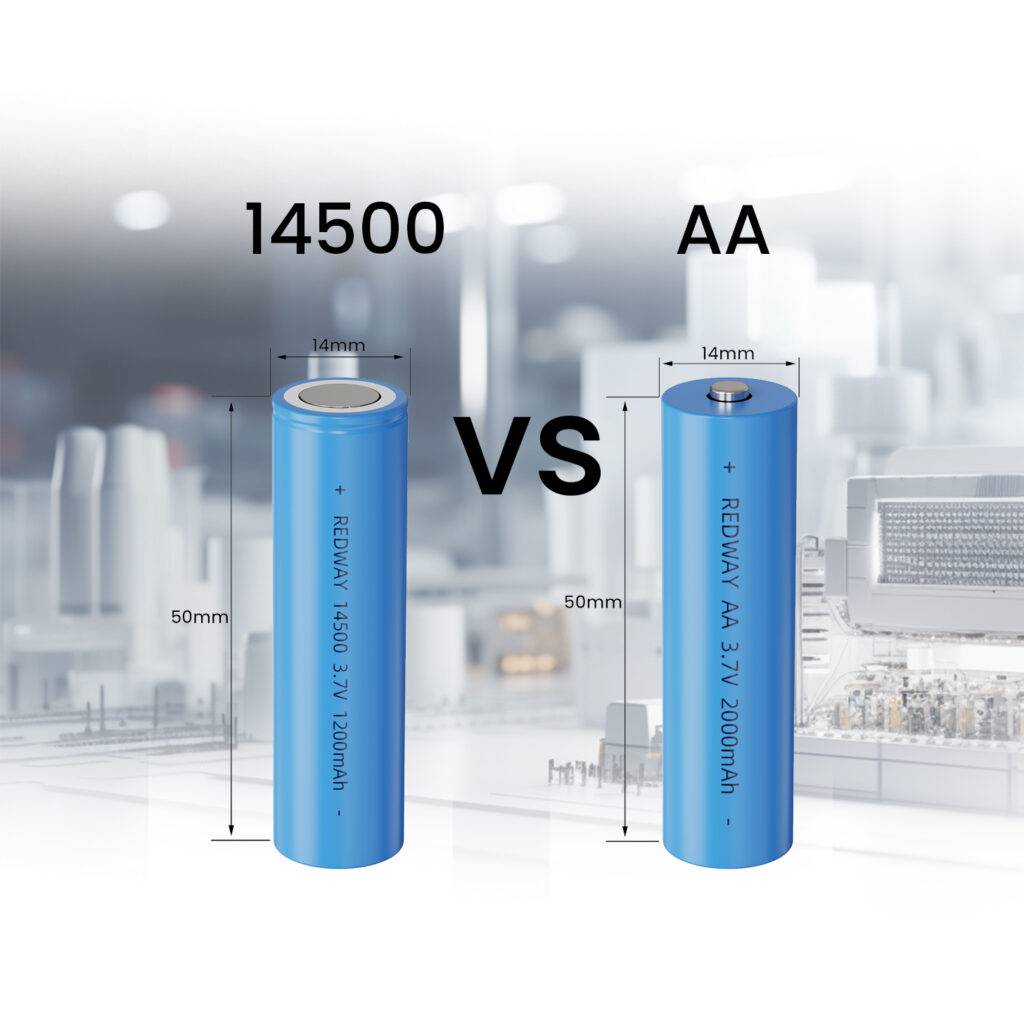
#post_seo_title
1. Introduction to 14500 and AA Batteries
- 14500 Batteries: These are lithium-ion batteries named for their dimensions: 14mm in diameter and 50mm in length. They typically have a voltage of 3.7V and come with a higher energy density compared to their NiMH or Alkaline counterparts.
- AA Batteries: One of the most widely recognized battery sizes worldwide, AA batteries come in several chemistries, including alkaline, NiMH (Nickel Metal Hydride), and lithium. Their nominal voltage ranges from 1.2V (NiMH) to 1.5V (Alkaline).
2. The Primary Differences
- Voltage: The 14500 battery’s voltage is significantly higher than that of a standard AA battery. While AA batteries usually deliver 1.2V to 1.5V, a 14500 provides 3.7V.
- Chemistry: 14500 batteries are lithium-ion, while AA batteries come in alkaline, NiMH, and even primary lithium varieties.
- Capacity: Even though 14500 batteries often have a higher energy density than AA batteries, their capacity, measured in mAh (milliampere-hours), may be lower than some high-capacity NiMH AA batteries.
- Discharge Rate: Due to their chemistry, 14500 batteries can often handle higher discharge rates than standard AA batteries, making them suitable for high-drain devices.
3. Can They be Used Interchangeably?
Given the voltage difference, it’s essential to exercise caution:
- Potential Over-Voltage: Using a 14500 battery in a device designed for 1.5V AA batteries can lead to over-voltage, potentially damaging the device or causing safety concerns.
- Physical Size: Both batteries share similar dimensions, so they will often fit in the same battery compartments.
- Device Requirements: Always consult the device’s user manual. If it specifies a particular type of battery or voltage range, stick to it.
- Charging: Never charge a 14500 battery in a charger designed for NiMH AA batteries. The charging profiles are drastically different and can lead to dangerous situations.
4. Tips for Using 14500 and AA Batteries
- Safety First: If you’re unsure about compatibility, it’s best to stick with the manufacturer’s recommendations for batteries.
- Storage: Store unused batteries in a cool, dry place away from direct sunlight. For 14500 batteries, a dedicated battery case is a good investment to prevent short circuits.
- Charging: Use a dedicated charger for 14500 batteries and ensure it’s designed for lithium-ion cells.
- Disposal: Given the different chemistries, ensure batteries are disposed of correctly. Many regions have recycling facilities for used batteries.
5. Conclusion
While 14500 and AA batteries share similarities in size, they differ significantly in terms of voltage and chemistry. Always be cautious and well-informed when deciding on interchangeability. Keeping device safety and battery longevity in mind will ensure optimal performance and reduce potential risks.

